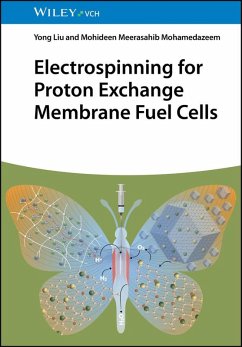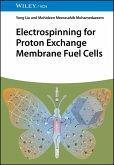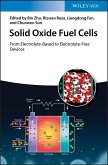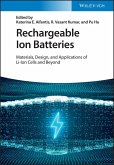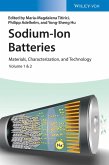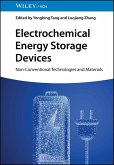Comprehensive reference on the design, characteristics, performance, and development potential of key components of PEMFC through electrospinning technologies
Electrospinning for Proton Exchange Membrane Fuel Cells discusses the use of electrospun materials in preparing next-generation fuel cell proton-conducting membranes, comprehensively reviewing the essential parts of proton exchange membrane fuel cell (PEMFC) components including the catalyst layer, gas diffusion layer, and proton exchange membrane. The book covers both electrochemical methods and hands-on experimental processes and provides a perspective of hydrogen fuel and PEMFC vehicles in the transformation of low-carbon energy.
Electrospinning for Proton Exchange Membrane Fuel Cells includes information on:
Electrospinning for Proton Exchange Membrane Fuel Cells is an excellent reference on the subject for materials scientists, catalytic chemists, polymer chemists, electrochemists, and electronics engineers.
Electrospinning for Proton Exchange Membrane Fuel Cells discusses the use of electrospun materials in preparing next-generation fuel cell proton-conducting membranes, comprehensively reviewing the essential parts of proton exchange membrane fuel cell (PEMFC) components including the catalyst layer, gas diffusion layer, and proton exchange membrane. The book covers both electrochemical methods and hands-on experimental processes and provides a perspective of hydrogen fuel and PEMFC vehicles in the transformation of low-carbon energy.
Electrospinning for Proton Exchange Membrane Fuel Cells includes information on:
- Working principles, current state of research, and existing obstacles of PEMFC components, as well as the role of electrospinning and nanofibers in PEMFC
- Physical properties and electrochemical polarization of the nanofiber catalyst layer prepared by electrospinning
- Water management ability of fuel cells under high inlet humidity
- Cold starting ability and performance aging of PEMFC through the electrospun microporous layer under high current density
- Experimental devices for the study of the electrospun proton exchange membrane and composite proton exchange membrane
Electrospinning for Proton Exchange Membrane Fuel Cells is an excellent reference on the subject for materials scientists, catalytic chemists, polymer chemists, electrochemists, and electronics engineers.
Dieser Download kann aus rechtlichen Gründen nur mit Rechnungsadresse in D ausgeliefert werden.

